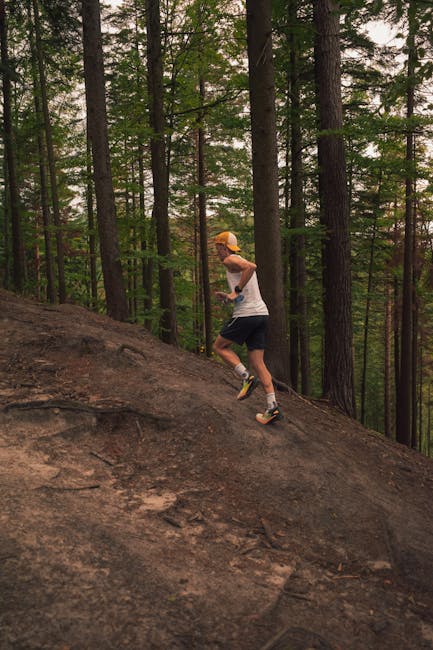
Do you ever feel stiff when you bend down? Struggle with deep squats? Or maybe you experience nagging lower back or knee pain? The culprit might be closer than you think: your hips.
In our modern, often sedentary lives, our hips can become incredibly tight and restricted, limiting our range of motion (ROM) and leading to a cascade of issues from poor posture to increased injury risk. But here’s the good news: you can reclaim your hip health! Developing better hip mobility is not just for athletes; it’s essential for everyday functional movement, enhanced performance, and a pain-free life.
Why Are Mobile Hips So Crucial?
Your hips are the epicentre of movement, connecting your upper and lower body. When they lack mobility, other parts of your body, like your lower back and knees, compensate, leading to strain and discomfort. Improving hip mobility can:
- Increase Range of Motion: Allowing you to move more freely in daily activities like walking, sitting, and lifting.
- Reduce Pain: Alleviate discomfort in the lower back, knees, and even ankles by restoring proper biomechanics.
- Enhance Athletic Performance: Crucial for sports requiring power, agility, and deep squats (think running, cycling, weightlifting).
- Improve Posture: Release tension that pulls your pelvis out of alignment.
- Prevent Injuries: A mobile hip is less prone to strains, sprains, and chronic overuse injuries.
The Best Hip Mobility Exercises for a Wider Range of Motion
Ready to unlock your full movement potential? Incorporate these highly effective hip mobility exercises into your routine:
1. Leg Swings (Front-to-Back & Side-to-Side)
How: Stand tall, holding onto a wall or sturdy object for balance. Swing one leg forward and backward in a controlled manner, gradually increasing the range. Then, turn to face the support and swing your leg side-to-side. Keep your torso stable.
Why: A fantastic dynamic warm-up that lubricates the hip joint, improves active range of motion, and stretches the hamstrings, glutes, and adductors.
2. 90/90 Hip Stretch
How: Sit on the floor. Bend one knee to 90 degrees in front of you, foot facing away from you (shin parallel to your body). Bend the other knee to 90 degrees out to the side, with your shin perpendicular to your body. Keep both glutes on the floor as much as possible. Lean forward over your front leg, then potentially over your back leg.
Why: Targets both internal and external hip rotation, addressing common stiffness patterns.
3. Pigeon Pose (Yoga)
How: Start in a plank position. Bring your right knee forward towards your right wrist, placing your right shin as parallel to the front of your mat as comfortable. Extend your left leg straight back. Keep your hips level and gently lower your torso over your front leg.
Why: A deep opener for the external rotators of the hip, particularly the piriformis and glutes, which often get tight from prolonged sitting.
4. Frog Stretch
How: Get on your hands and knees. Slowly widen your knees out to the sides, turning your feet outwards so your shins are parallel with your knees. Keep your ankles in line with your knees. Gently push your hips back towards your heels.
Why: Excellent for opening the inner thighs (adductors) and improving hip internal rotation, which is often neglected.
5. Spiderman Lunge with Thoracic Rotation
How: Start in a push-up position. Step your right foot outside your right hand. Keep your left hand on the floor and lift your right arm towards the ceiling, rotating your torso. Return to start and repeat on the other side.
Why: A powerful full-body mobility drill that opens the hips (hip flexors), groins, and improves thoracic spine rotation.
6. Glute Bridges
How: Lie on your back, knees bent, feet flat on the floor hip-width apart. Engage your core and glutes, then lift your hips towards the ceiling until your body forms a straight line from shoulders to knees. Lower with control.
Why: While often seen as a strengthening exercise, active hip extension is crucial for hip mobility, counteracting the effects of prolonged sitting and strengthening the posterior chain.
Integrating Mobility into Your Routine
- Daily Mini-Sessions: Dedicate 5-10 minutes each day. Consistency is key!
- Warm-Up: Incorporate dynamic hip mobility drills before workouts to prepare your body.
- Cool-Down: Use static stretches after exercise to improve flexibility and aid recovery.
- Break Up Sitting: Stand up, walk around, and do a quick hip stretch every hour or so if you have a desk job.
Tips for Maximizing Your Results
- Listen to Your Body: Never push into pain. You should feel a stretch, not sharp discomfort.
- Breathe Deeply: Use your breath to relax into stretches and deepen your range.
- Be Consistent: Small, regular efforts yield far better results than sporadic, intense sessions.
- Proper Form: Watch videos or work with a professional to ensure you’re performing the exercises correctly.
Don’t let stiff hips hold you back any longer. By consistently incorporating these effective hip mobility exercises into your routine, you’ll unlock a greater range of motion, reduce pain, enhance your physical performance, and move through life with newfound freedom and ease. Your hips (and the rest of your body) will thank you!
